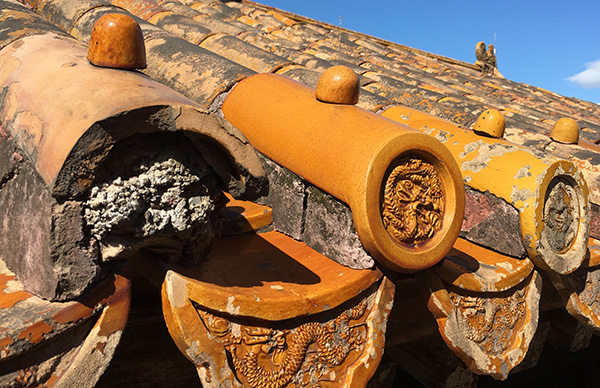 |
|
[Photo by Jiang Dong/China Daily] |
Of those 116, about 20 are likely eventually to be offered permanent jobs with the museum.
"We are keen to ensure that everyone who is working closely with cultural heritage is certified and has gone through the training with us," Shan said. "It's important when we are restoring this royal architecture stretching from the Ming to the Qing Dynasties to strictly follow the proper procedures.
The certified restorers are selected from engineering teams nationwide through theory and practice tests, and the successful candidates receive training and tutoring on cultural heritage from veteran restorers in the museum and experts from several other national-level institutions.
In centuries gone by maintenance work on buildings in the Forbidden City almost never stopped, Shan said.
"There were generations of talented restorers with a huge amount of experience."
Comprehensive restoration of major structures in the Forbidden City began in 2002 and is due to continue until 2020, the 600th anniversary of the former imperial palace's founding. It is the largest scale renovation of architecture in the palace after the monarchy fell.
In 2008 architectural restoration techniques pertaining to the museum were listed as a national-level intangible cultural heritage, but in itself that declaration cannot ensure that restoration in the future will be up to scratch. Like a parent employing a child minder, Shan is extremely anxious to ensure that anyone the museum brings in to do the intricate, demanding restoration work possesses the skills and has the character that deserve his trust.
Li Yongge, 63, a carpenter who has worked at the museum since 1975, and who was one of the tutors on the recent training program, said: "In the old days when restorers were trained the master-apprentice model was followed.
"Doing it that way you couldn't train many people. Leaders in our industry are in their 60s and it has been very sad to see that in our craft no new blood has been coming through."
However, things seem to be changing, Li says.
"I'm delighted to see that a lot of new talent is finally here, and I feel confident about the training these people will receive from people like me.
"Everyone who works for the Palace Museum will get an official certificate from now on. That is an honor for them and will encourage them to do better with other restoration work."
Skills competitions were used to determine who, among bricklayers, carpenters, painters, stonemasons and others from 10 engineering companies, would do work in the Hall of Mental Cultivation. In the competitions those taking part are required to use old tools rather than new technology, Li says.
"Despite the 2020 deadline, we insist that the work on the project is of the highest standard," Li said.
Architecture experts will follow the whole process as supervisors.
"This project will set an example for us because we fill in the gaps in studies, design and field work," said Liu Yang, deputy head of the archaeology department in the State Administration of Cultural Heritage.
"It will eventually help form China's own systematic disciplines and criteria restoring cultural heritage, which differ from general construction."
Restoration of the Hall of Mental Cultivation will end no later than June of 2020, Shan says, and after the 18-year comprehensive renovation is completed, all engineering projects in the Palace Museum will pause for six months.
"Then, on the Forbidden City's 600th anniversary, visitors will be able to appreciate what a wonderful place it is, and the following year another 15-year cycle of maintaining the architecture will begin."